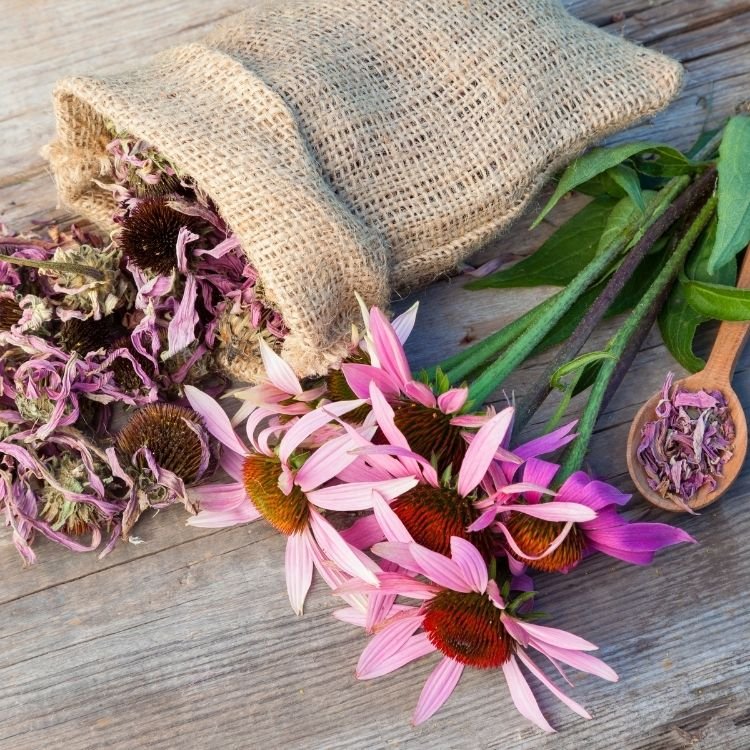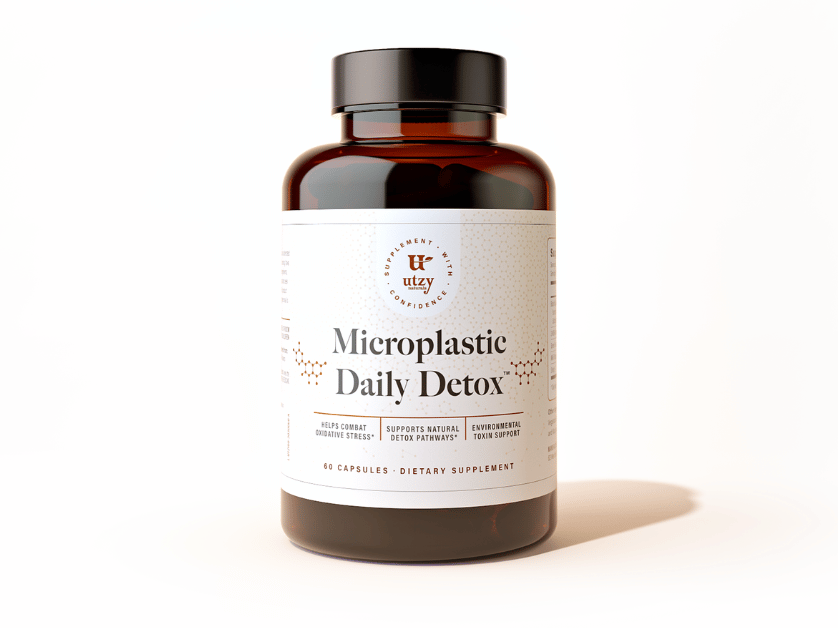shop
learn

5 Benefits of Echinacea
October 10, 2024 4 min read
Echinacea a popular herb with a long history of use (1). In fact, it's thought to be one of the most effective immune-supporting herbs on the market.
That being said, its benefits go far beyond immune support.
Read on to learn all of the benefits of Echinacea, as well as a brief history.
The History of Echinacea:
Echinacea is a distinctly American herb. In fact, it’s natively found only in the US. While it’s now grown all around the world, it’s origin was initially in North America.
The name "Echinacea" comes from the Greek word ἐχῖνος (echinos), meaning hedgehog, in reference to the spiky appearance and feel of the flower heads.
Archeological evidence shows that indigenous tribes in the United States used Echinacea as far back as the 18th century (although its native use probably goes back much further).
Traditionally, Echinacea was used for “wounds, burns, and insect bites... chewing of roots for toothache and throat [pain], and internal application for pain, coughs, stomach cramps, and snake bites” (2).
Echinacea was adopted by new settlers in America and quickly became a popular herbal ingredient. The first known Echinacea preparation was known as “Meyer’s Blood Purifier”, it was suggested for use when experiencing everything from rheumatism to snakebites.
In 1939, Echinacea was brought over to Germany and cultivated in Europe for the first time. Since then, most of the research on Echinacea has been undertaken by teams of German scientists who continue to unlock new uses for this fantastic plant!
5 Top Benefits of Echinacea:

1. Immune System Support
The top benefit of Echinacea is its immune system supporting properties.
Echinacea benefits your immune system by supporting macrophage activation and cytokine expression (3). In particular, macrophage activity is vital for your immune defenses. The role of the macrophage is to engulf invading cells (such as germs) and neutralize them (4).
In addition to increasing macrophage expression, Echinacea has a variety of other constituents that are thought to give it immune-supporting benefits, including alkamides and polysaccharides.
We include Echinacea in our U-Mune immune health formula.
2. May Inhibit Bacterial Growth
Another of the key benefits of Echinacea is its effects on bacterial growth. Research shows that Echinacea has the ability to support your body in fighting off various types of bacteria (5). As an example, research has been conducted that shows that Echinacea is helpful in fighting against resistant bacteria such as E. coli and Staph (6).
The beauty of using a natural herb like Echinacea is that it provides a variety of different phytochemicals that help to fight off bacterial invaders at multiple levels. This can be highly effective compared to a standard medication that often only works on one specific type of bacteria.

3. Inflammatory Balance
Echinacea is also helpful in maintaining normal inflammatory balance in your body. Recent research shows that Echinancea contains a special class of phytochemicals called alkamides. In particular, Echinacea contains a special alkamide molecule called “dodecadiendiynoic” which has been shown to be beneficial for supporting a healthy inflammatory response (7).
4. Skin Health
Echinacea contains many different constituents that work to both protect your skin and to improve the hydration of your skin (8). These protective benefits help to reduce wrinkles and improve overall skin appearance.
Echinacea also helps to improve wound healing. As mentioned above in the “History” section, Echinacea was actually a common treatment for snakebites and other types of open wounds. Echinacea’s wound-healing abilities are due to its ability to prevent bacterial growth.
For the home herbalists out there, using a poultice made from a mixture of water and powdered Echinacea root is great for helping your body heal a skin wound.

5. Echinacea Is A Powerful Antioxidant
Studies show that Echinacea is capable of neutralizing various types of common free radicals in the body. Free radicals are unstable atoms found in your body that damage healthy cells. This free radical damage speeds up the aging process.
Antioxidants are a special class of molecules that seek out free radicals and neutralize them. Echinacea is rich in various types of antioxidants, giving it a unique ability to scavenge for free radicals in your body (9). This helps to slow down the aging process.
Wrapping Up
While Echinacea is often thought of as a “wintertime” herb, it has so many other benefits! That being said, you’d be hard-pressed to find a more effective herb for supporting your immune system during the winter months.
We include Echinacea as part of our U-Mune immune support formula.
It’s a great formula to have on hand to keep you and your family protected during the winter months.
________________________________________________________________________

References:
1. M. Blumenthal, W.R. Busse, A. Goldberg, J. Gruenwald, T. Hall, C.W. Riggins, R.S. Rister S. Klein., & R.S. Rister. (1998). The complete german commission e monographs: Therapeutic guide to herbal medicines. Austin: American Botanical Council. Retrieved from http://cms.herbalgram.org/echinacea
2. Hostettman, K. (2003). History of Plants: EchinaceaI. Institute of Pharmacognancy. https://www.ncbi.nlm.nih.gov/pubmed/12808356
3. Barrett, B., Brown, R., Rakel, D., Mundt, M., Bone, K., Barlow, S., & Ewers, T. (2010). Echinacea for Treating the Common Cold. Annals of Internal Medicine, 153(12), 769. doi: 10.7326/0003-4819-153-12-201012210-00003
4. Verschdoor, C. P., Puchta, A., Bowdish, D. M. (2012). The macrophage. Methods of Molecular Biology. Retrieved from https://www.ncbi.nlm.nih.gov/pubmed/22262440
5. Hudson, J., & Vimalanathan, S. (2011). Echinacea: A Source for Respiratory. Pharmaceuticals, 4(7), 1019–1031. doi: 10.3390/ph4071019
6. Hudson, J. B. (2012). Applications of the PhytomedicineEchinacea purpurea(Purple Coneflower) in Infectious Diseases. Journal of Biomedicine and Biotechnology, 2012, 1–16. doi: 10.1155/2012/769896
7. Kraus, G., Bae, J., Wu, L., & Wurtele, E. (2006). Synthesis and Natural Distribution of Alkamides from Echinacea. Molecules, 11(10), 758–767. doi: 10.3390/11100758
8. Yotsawimonwat, S., Rattanadechsakul, J., Rattanadechsakul, P., & Okonogi, S. (2010). Skin improvement and stability of Echinacea purpurea dermatological formulations. International Journal of Cosmetic Science, 32(5), 340–346. doi: 10.1111/j.1468-2494.2009.00559.x
9. Hu, C., Kitts, D. D. (200). Studies on the antioxidant activity of echinacea root extract. Journal of Agriculture and Food Chemistry. Retrieved from https://www.ncbi.nlm.nih.gov/pubmed/10820044
Leave a comment
Comments will be approved before showing up.
Also in Health
Subscribe
Sign up to get the latest on sales, new releases and more …
Join the Utzy Naturals Club!
Sign up and get the latest on sales, new releases, and more...






